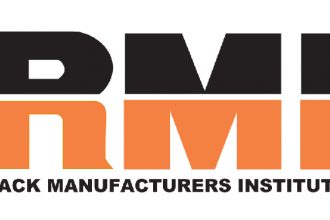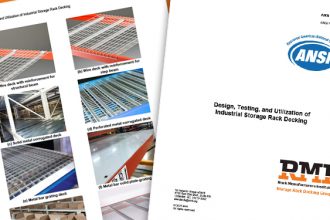Rack Inspections: An Overview

Among the many best practices to ensure the safety of industrial steel storage rack systems and the workers around it, inspections are among the most critical. Indeed, there are several kinds of rack inspections, including:
Inspections Required By Building Codes: The International Code Council’s International Building Code (IBC) has been adopted for use as a base code standard by the majority of jurisdictions in the U.S. The 2018 International Building Code has also been adopted in some locations. These codes reference RMI’s ANSI MH16.1-2012: Specification for the Design, Testing and Utilization of Industrial Steel Storage Racks in section 2209.1 as the standard for safe design and installation of steel storage racks. Likewise, the same specification is referenced by the National Fire Protection Association’s NFPA 5000 Building Construction and Safety Code. These codes, as well as other permitting requirements at the local or regional level, must be met when a new rack system is installed in a new or existing facility. Before a certificate of occupancy can be obtained, a building official will inspect the installation to verify that all code provisions have been satisfied.
Installation Inspections: Ideally performed by a licensed, professional and qualified rack engineer, either an independent professional or one employed by the rack’s original equipment manufacturer (OEM), these inspections verify that the structure has been installed in accordance with the Load Application and Rack Configuration (LARC) drawing.
Ongoing System Inspections: It is the responsibility of the owner and/or operator of a storage rack system to ensure that the rack is used and maintained properly. This can be accomplished by committing to regular, routine inspections of the racking at least once a year. As a best practice, however, inspection frequency should correspond to the velocity of inventory throughput, volume of traffic and degree of activity in the racking. Areas to be examined include—but are not limited to—the condition of the pallets and loads in the system as well as the rack’s anchorage, column base plates, columns, frame bracing, shelf beams and connections, wire decks and other accessories.
As a part of Ongoing System Inspections, if any damage occurs (from a forklift impact or seismic event) it is the responsibility of rack owner to immediately unload the system, prevent it from being used, and properly repair or replace the affected portions of the rack before putting it back into service. RMI’s “Guideline for the Assessment and Repair or Replacement of Damaged Rack – Version 1” outlines and defines the proper steps for conducting surveys and assessments of rack damage. It also provides guidelines for ongoing reporting of damage and repairs. Further, a qualified, professional rack engineer should be retained to oversee the repair process and to certify that the repaired section—as well as the entire system—complies with the current standards outlined in RMI’s ANSI MH16.1-2012: Specification for the Design, Testing and Utilization of Industrial Steel Storage Racks. Additionally, depending on local building codes, a building inspector may need to review the repair as well.
Finally, although not a formal inspection, any potential reconfiguration of a racking system should be reviewed by a licensed, professional rack design engineer. This process verifies that a proposed modification of load beam elevations or a rack structure reconfiguration will continue to support the pallets stored within it is critical. The engineer will review the original design documentation and LARCs, evaluate the suggested changes in racking configuration, and analyze the existing structure to determine if it will continue to function safely should changes be made. Additionally, this professional will thoroughly inspect the existing structure to determine if any components are damaged and make recommendations for repairs or replacement.
Looking for more information about safe practices in industrial storage rack system installation, use and repair? Check out RMI’s extensive library of guidelines and standards publications.


